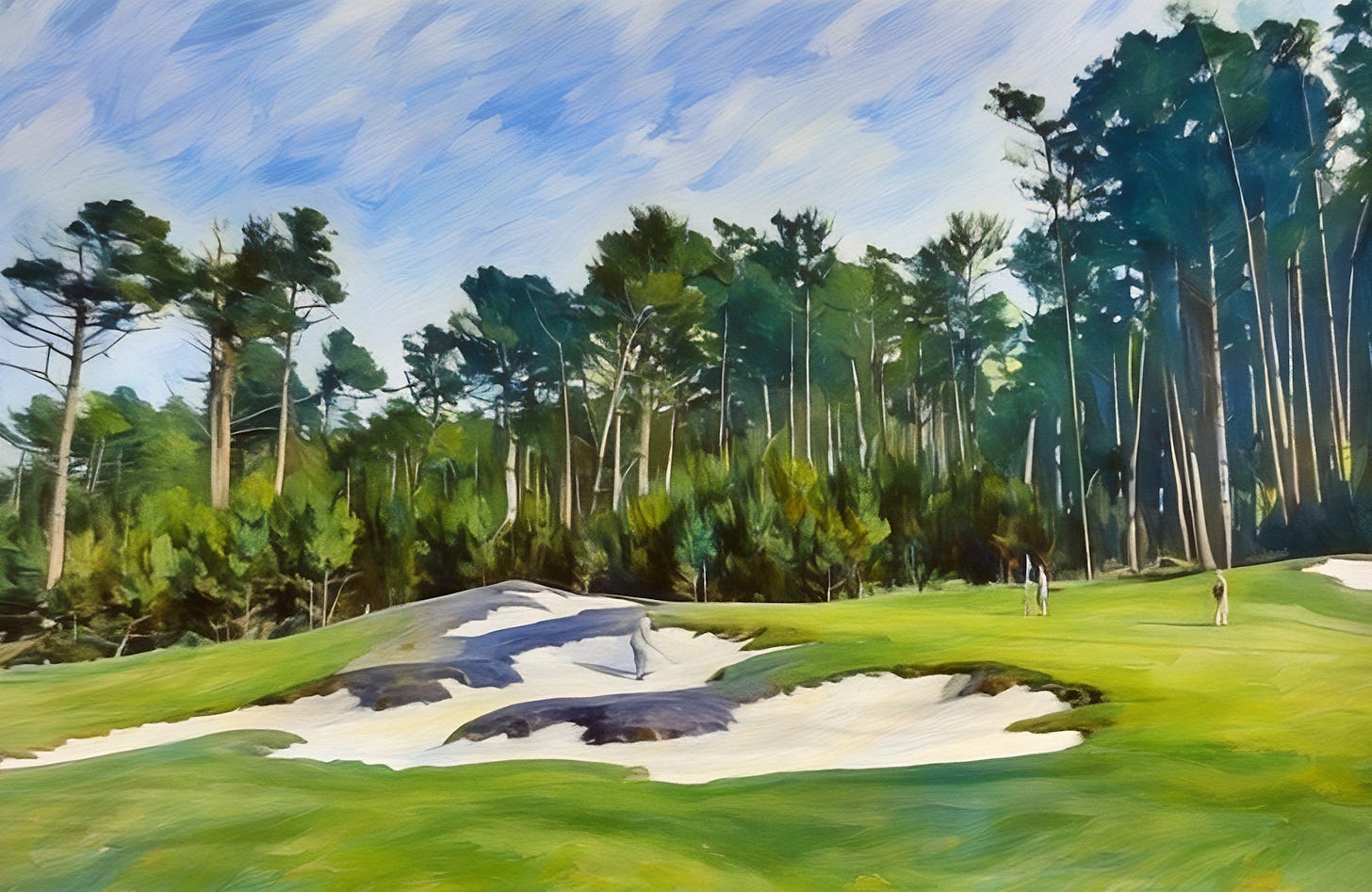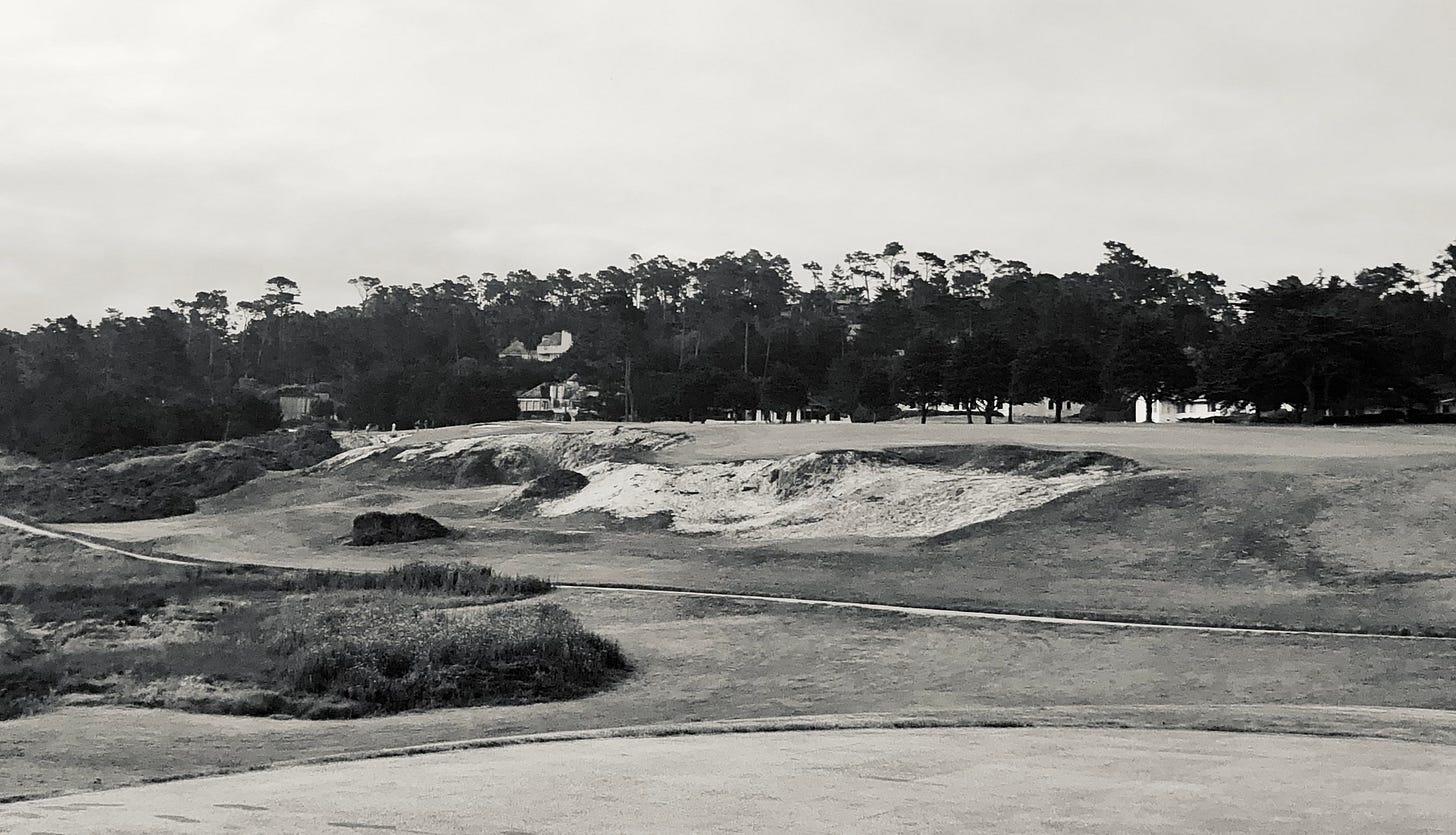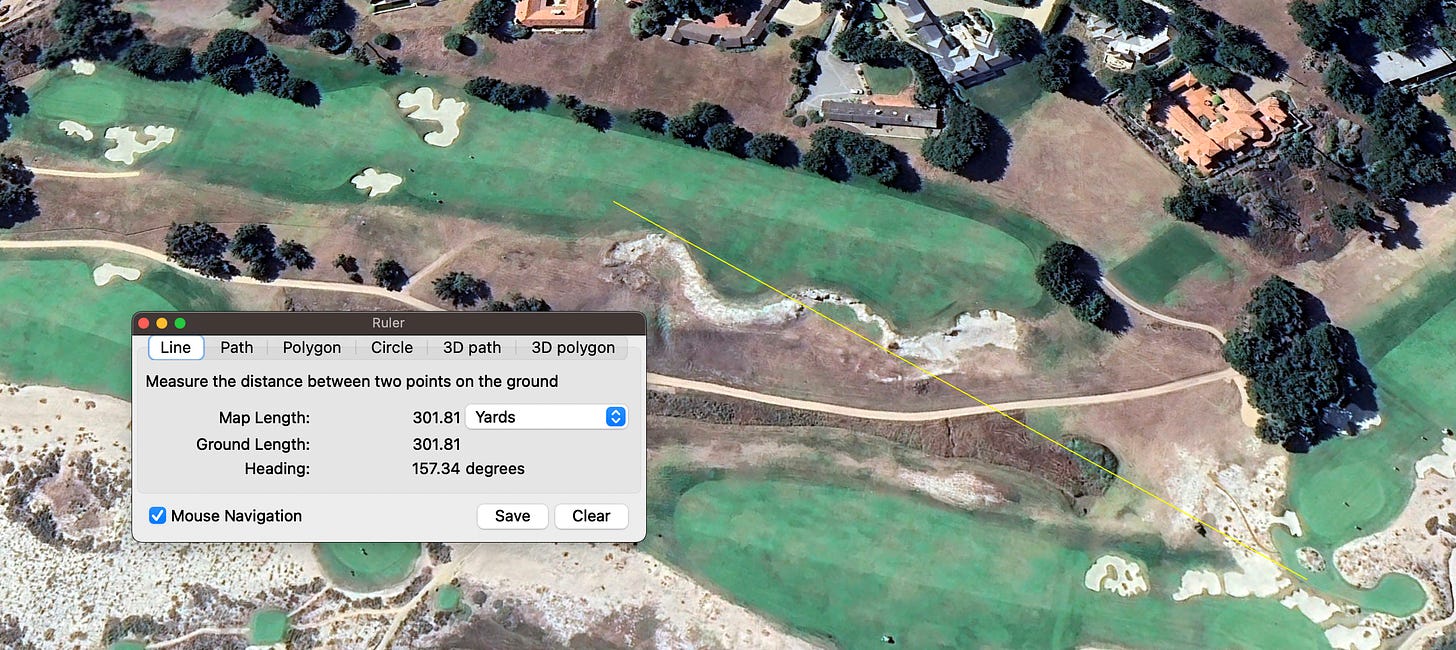Cypress Point's Three Left Turns
The par-3s are deservedly famous, but the par-5s are as great as any in the world. A look at three front nine holes that bend left and violate design rules in all the best ways imaginable.
Cypress Point features a trio of par-5s in a five-hole stretch. On a normal, non-Walker Cup day, there are four “three-shotters” in its first 10 holes.
Another twist: the fun comes early in the round. The second, fifth and sixth holes are all par-5s and each bends to the left.
Cue up the panelist points deduction for a distinct and concerning lack of shot value balance!
On a course full of design abnormalities, no rule-bender better encapsulates why every other plaid-clad, blueprint-ferrying, finger-pointing genius is only vying for a distant second in the Grade I Greatest Golf Architect Stakes.
The outside world is unlikely to see much of the action on Cypress Point’s first three par-5s during this week’s Walker Cup. Not to worry. You won’t miss seeing how the architect ingeniously designed them to play. The fifth (and tenth) have been reduced to par-4s on the Walker Cup scorecard—as if it matters in match play. Maybe the USGA setup team did this so historians will someday ask, “who let the equipment get so juiced that we drag the masterworks down to the crass level of worrying about one corporation’s bottom line and their VP’s second-home purchasing power, above the game?” Or something like that.
If you’re coming to the Walker Cup, shut out the silly approach distances and pay special attention to the front nine’s par-5s while imagining how they play for mere mortals. There are design lessons to be learned!
And ignore what irons some 19-year-old approaches with while using modern lofts and pellets that’ll survive the next Ice Age. Instead, notice how the early par-5s wind their way up, over, and through the terrain while providing thrills for all golfers. Even pay attention to how much the lay-ups matter or how the three-shotters finish with gentle, approachable green complexes (but are they?).
Second Hole: 579 Yards
“In front of the tee, which lies high among the sand dunes, is a magnificent natural hazard rather terrifying and lying diagonally to the line of play.”
Robert Hunter
As with Augusta National, MacKenzie was on-site more than people often believe. He made numerous changes to the hole sequencing before ground was broken after getting to know the site and working with a now-trusty team headed by Robert Hunter. And he must have grappled with this one’s difficulty in the hickory era before deciding to greenlight the final details. His ideal tee location sat on a dune separating the first and 13th greens, which meant a big carry in his day. Given MacKenzie’s so-so game and his general concern for the average golfer, he appeared to consider a double-fairway idea that was drawn into an initial course map.
He scrapped this idea, and it would not be absurd to assume his decision was driven by a routing change putting the ninth in its current location while pushing the 12th and 13th toward the second hole. And there went the homage to his mult-option Lido prize-winning hole, making a west coast appearance.
By keeping all of the second fairway on a shelf offering views of the lower holes, he also kept Marion Hollins happy. The membership director and general driving force behind all things Cypress Point would have fairway view home sites on the rim starting in the low 50s. (Eventually, several beauties were built, but the club has pretty aggressively planted a line of cypress today to mask them.)
After MacKenzie bagged the idea to go all Lido on the place, he, Robert Hunter, and their crew crafted a beautiful dogleg left par 5 that rises about 30 feet from tee to green. Modern distances mean the 2025 Walker Cuppers can cut off the second hole dogleg and easily get home in two when downwind. But added carry distances also mean it’s easier to reach the boundary line down the right.
In this century, a rugged shelf just below the fairway saw a return of MacKenzie and Hunter’s faux dunescape aesthetic. The area had been turned into formalized bunkering where three egg-shaped bunkers have been broken up and now look like more like sandy spill. Somewhere between a bunker and a dune. Eggs over easy? Too much?
Anyway, the aesthetic change made it tougher to pick a line from the tee. The driving lines are murkier to decipher. In a good way. The sandy spill extends down the hole enough to draw the eye farther down the line and maybe even lure an unsuspecting golfer into biting off more than they can chew.
As with the other par-5s at Cypress Point, it’s MacKenzie’s focus on the lay-up shot that makes the second holes so lively and timeless. Like his hickory-era counterparts George Thomas and A.W. Tillinghast, certain architects built surprisingly long holes but finished them off with lightly protected greens. This prompted them to put more thought and decision-making into the second shots of par-5s, whereas today’s design focuses largely on the shot going for a green in two.
The second at Cypress Point calls for a carry over two bunkers. But from there it’s pretty smooth sailing because the golfer earned a reward after navigating a tough first half to the hole.




